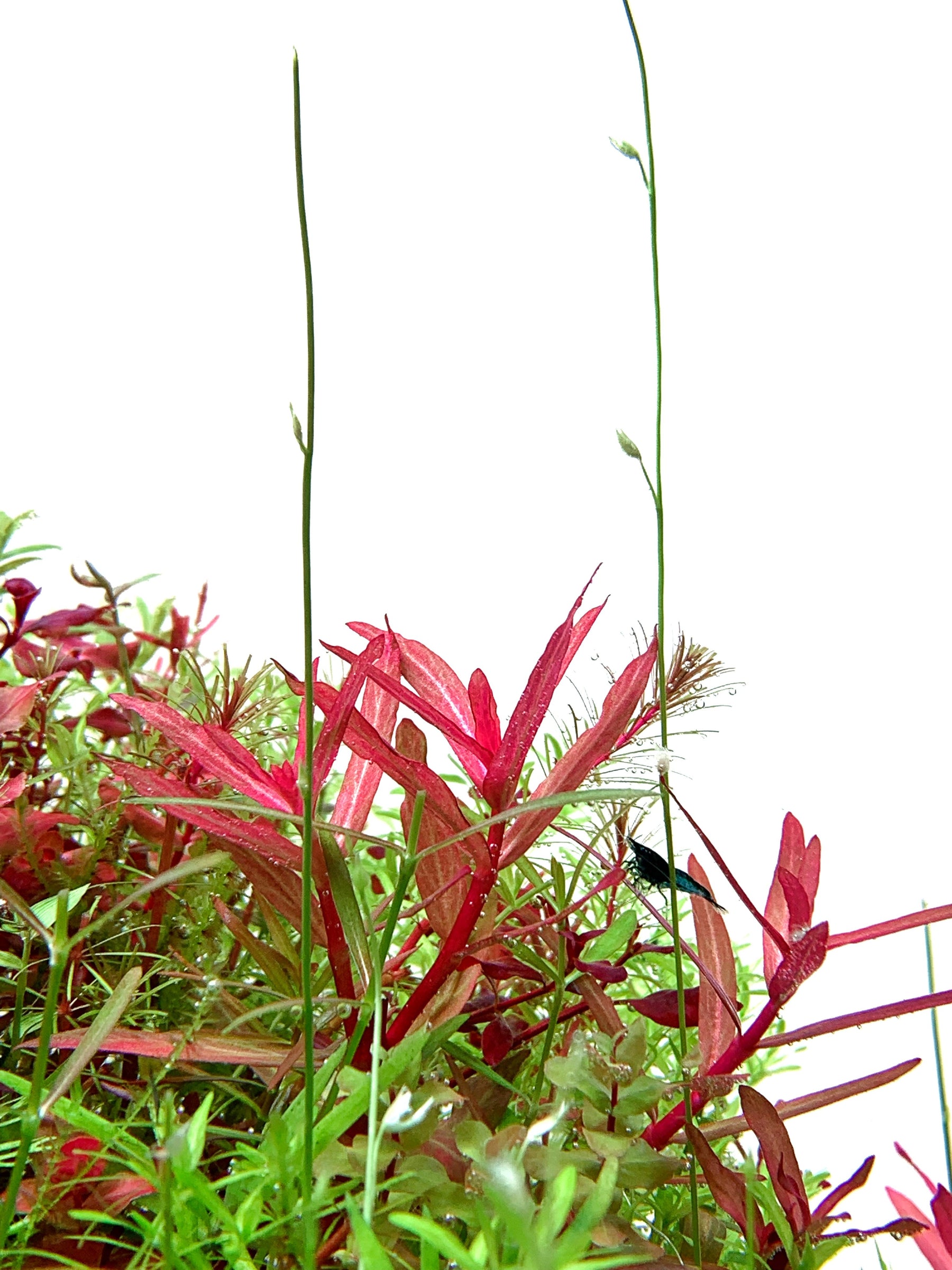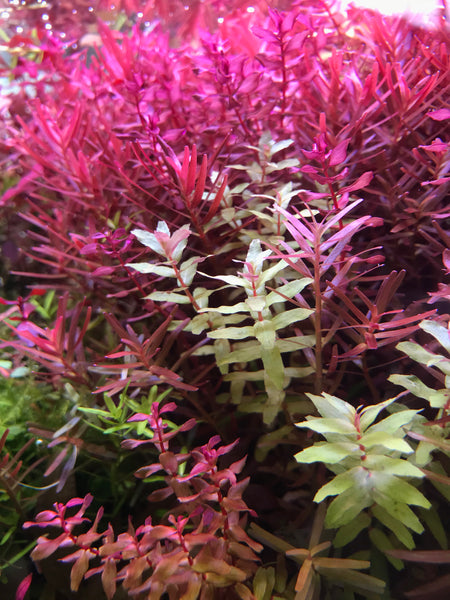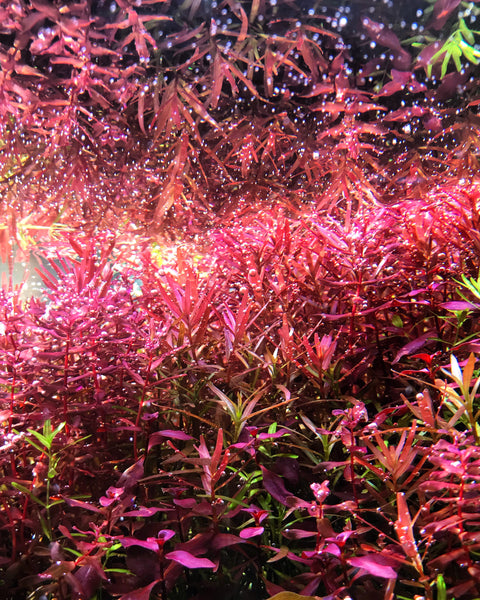
4 Tips for Achieving Red Aquarium Plants
Red in a Planted Aquarium?
Written by: Chris (@shrimpery)
One of the more mystifying subjects in the realm of aquascaping seems to be red aquatic plants: why do some people have intense reds, while others struggle to get much color at all?
I can humbly admit that I am in the first category- but it took some trial and error to get my plants to reach their full potential in terms of rich coloration.
As usual, it can be challenging to get good information on the subject, so I wanted to take a little time to break down my techniques and observations in order to help those seeking bright reds in their aquascape.
TIPS
- First and foremost: bright light and ample CO2 injection are key. There are a few plants that will be vibrant red even under moderate lighting conditions (Ludwigia super red is a good example), but most rotalas and other red plants need intense lighting (in the right spectrum/wavelength) to achieve full-color potential. Some studies show that the amplified red pigment functions as a kind of sunscreen for the plant cells; with this theory in mind, it makes sense that increasing the light intensity would give certain plants a visible ‘suntan.’ I recommend the UNS Titan fixture, which easily brings out the reds in my desktop tank. Twinstar LED lighting also makes great lights for this purpose. In addition, using a quality CO2 regulator, like the UNS Pro Dual Stage, for your planted tank gives red aquarium plants the boost they need to thrive and grow efficiently.
-
Choose the right plants! Not all stem plants will turn red under bright light. For example, some varieties of rotala will be green even under intense light fixtures; others will be bright red under strong light, but greenish orange under moderate to low light. It’s essential to carefully select plants that really have the potential to become red under the right conditions; double check that you are buying the correct cultivar, or you may be setting yourself up for disappointment.

-
Good nutrition is also essential. A complete, all-in-one liquid fertilizer, like UNS Plant Food, has everything you need for achieving bright reds. It is a misconception that extra iron is required for bright reds. Like all plants, trace amounts of iron are needed, but dosing extra iron beyond trace amounts do not lead to increases in red pigment or pigment intensity. While the red pigment produced by the plants does contain iron, the plants will not produce more red pigment than they need just because more iron has been added: a little iron goes a long way. In fact, overdosing on iron is more likely to cause harm to invertebrates such as shrimp (which are very sensitive to free copper and iron cations) than it is to benefit the plants.
- Finally, an anecdotal point: lowering nitrates may be important for achieving peak redness. I was initially skeptical after hearing this idea parroted on aquascaping forums, but it is congruent with my own observations. I try to keep nitrogenous wastes very low in my tanks, and I’ve noticed that when I’ve let nitrates accumulate (for example, after returning from an extended vacation or after setting up a new scape using enriched substrate), my plants look noticeably less red and vibrant (despite light levels remaining at their normally high levels. Thus, if you have tried all of the previous points to no avail, add this final step to the mix and you may finally reach your redness goals! You can limit nitrates by doing frequent water changes (I do three 20-30% changes a week), avoiding overfeeding your fish, and using oversized filters (increasing surface area for bacteria that metabolize nitrogenous wastes).
In summary: bright light, the right varieties, good fertilization, and low nitrates (probably) are required for truly red plants. If your plants aren’t red, consider which of these points you may be missing and correct the issue. I really hope this guide helps you step up your red plant game!
Feeling inspired? Click here to shop our live aquarium plants!
Tell us - Was this article helpful? Please leave a comment below!
If you have any questions regarding this article, please DM us on Instagram, Facebook, or email support@buceplant.com so we can assist you - @buceplant








Comments
Leave a comment